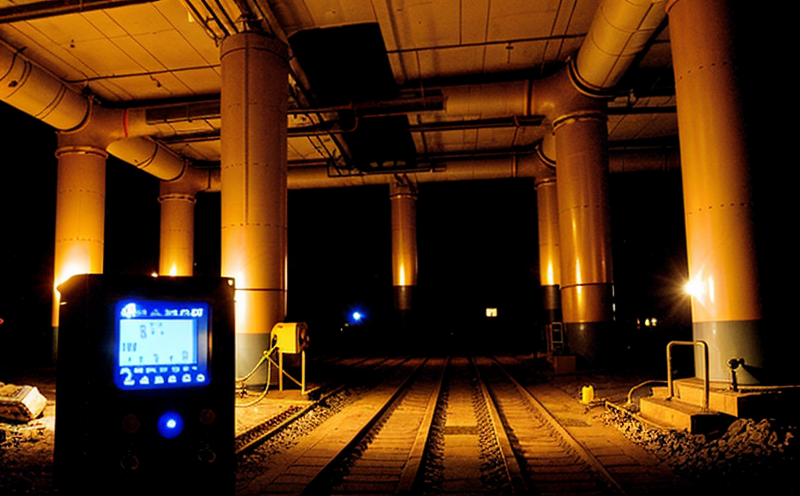DIN 25710 Uranium and Thorium Content in Ores Testing
The DIN 25710 standard provides a method to determine the uranium and thorium content in ores. This testing is crucial for mining operations, particularly those dealing with radioactive materials. The process involves several key steps that are essential for accurate results.
Firstly, ore samples must be prepared according to strict protocols. This typically includes drying the sample at a controlled temperature to remove any moisture, followed by crushing it into fine particles. The particle size is critical as it affects the precision of the test; finer particles ensure better dissolution and more accurate measurement.
The next step is digestion, where the finely crushed ore samples are treated with strong acids such as nitric acid or hydrochloric acid to dissolve uranium and thorium compounds into a solution. This process is crucial for ensuring that all target elements are released from their mineral hosts.
Once the sample has been digested, it undergoes a series of chemical analyses. These analyses typically involve spectroscopy techniques such as X-ray fluorescence (XRF) or inductively coupled plasma mass spectrometry (ICP-MS). The choice of technique depends on the required sensitivity and precision.
The results obtained from these analyses are then compared against international standards, including DIN 25710. Compliance with this standard ensures that the testing methods used are consistent with industry best practices and regulatory requirements.
Testing for uranium and thorium content is essential in mining because it helps identify potential health risks associated with radioactive materials. In addition to ensuring worker safety, accurate measurements of these elements can also influence decisions regarding resource allocation and environmental impact assessments.
The importance of this test cannot be overstated. It plays a vital role in safeguarding public health and the environment by providing reliable data on the levels of uranium and thorium present in mined materials. Compliance with DIN 25710 ensures that mining companies meet regulatory standards while also contributing to broader sustainability goals.
Understanding the specific requirements of this testing is important for quality managers, compliance officers, R&D engineers, and procurement professionals working within the mining sector. By adhering to these stringent protocols, stakeholders can ensure accurate measurement of uranium and thorium content in ores, thereby promoting safer practices across all stages of production.
Frequently Asked Questions
Benefits
The benefits of adhering to DIN 25710 are numerous. Firstly, it promotes worker safety by ensuring that all mining operations comply with stringent regulatory requirements regarding exposure limits for uranium and thorium. Secondly, it aids in responsible resource management through accurate measurement of these elements.
Ensures compliance with international standards
Maintains consistent quality across different batches of ore samples
Promotes safer working conditions by reducing exposure risks for miners
Supports informed decision-making processes related to environmental impacts
Facilitates better planning and execution of remediation efforts when necessary
Enhances reputation among stakeholders who value corporate responsibility
In summary, adhering to DIN 25710 not only meets regulatory obligations but also contributes positively towards sustainable practices within the mining industry.
Why Choose This Test
The precision and reliability of results provided by this test make it indispensable for mining operations dealing with radioactive materials.
It helps ensure compliance with international standards, thereby enhancing the reputation of mining companies globally.
The rigorous nature of the DIN 25710 standard guarantees consistent quality across various batches of ore samples.
This test plays a crucial role in safeguarding public health by identifying potential risks associated with radioactive materials.
By adhering to this standard, mining companies can make more informed decisions regarding resource allocation and environmental impact assessments.
The thoroughness of the DIN 25710 testing process ensures accurate measurement of uranium and thorium content in ores. This accuracy is essential for maintaining worker safety and ensuring compliance with regulatory requirements.
Environmental and Sustainability Contributions
DIN 25710 testing contributes significantly to environmental sustainability by providing reliable data on the levels of uranium and thorium present in mined materials. This information is vital for assessing potential risks and implementing appropriate mitigation strategies.
Reduces exposure risks for workers by identifying hazardous elements early
Aids in planning and executing remediation efforts when necessary
Promotes responsible resource management through accurate measurement of these elements
Supports informed decision-making processes related to environmental impacts
Facilitates better understanding of the long-term effects of mining activities on ecosystems
Enhances reputation among stakeholders who value corporate responsibility and sustainability practices
By adhering to DIN 25710, mining companies can contribute positively towards sustainable development goals while ensuring compliance with international standards.





